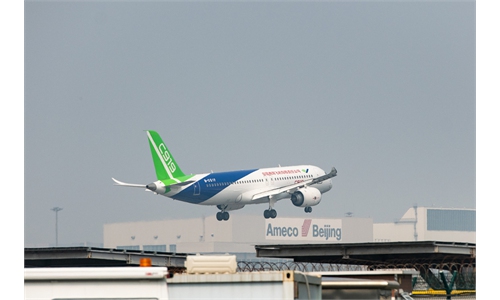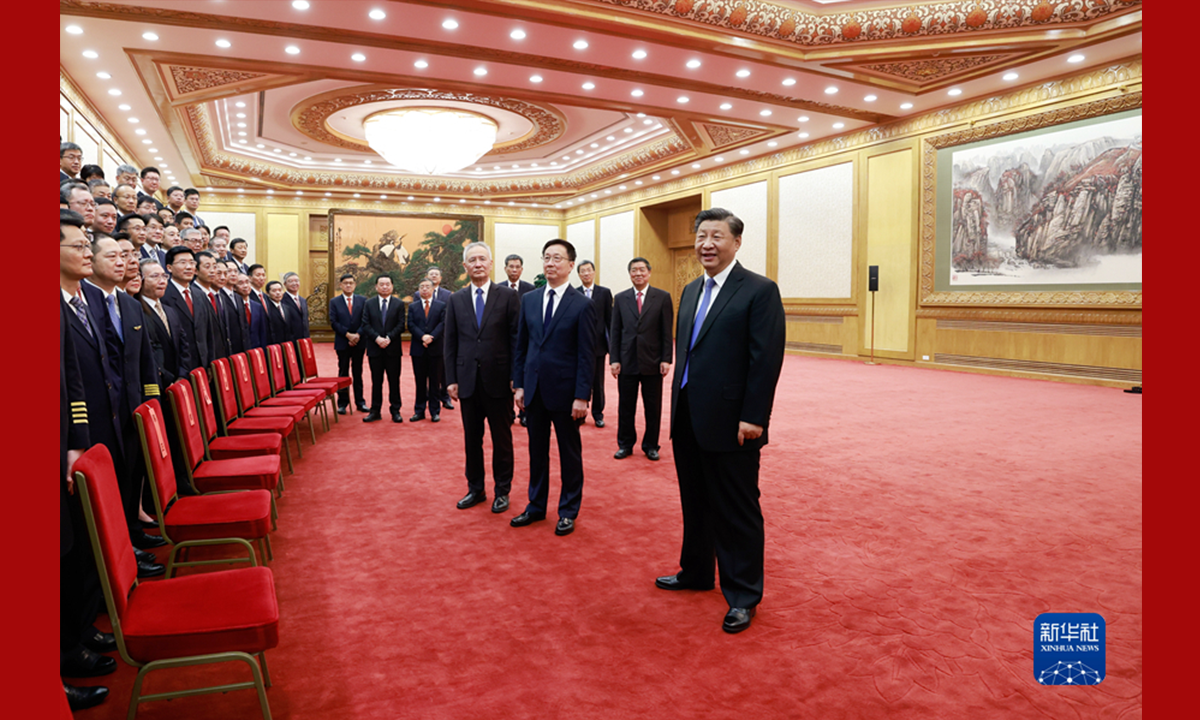
Photo:Xinhua
Chinese President Xi Jinping on Friday commended the achievements made in the development of the C919 large passenger aircraft and called for more major breakthroughs in China's high-end equipment manufacturing.
Xi made the remarks when meeting representatives from the C919 project team and viewing an exhibition on the project's achievements at the Great Hall of the People.
China's domestically developed C919 passenger jet gained the type certificate (TC) from China's civil aviation regulator at the end of September, with the first aircraft expected to be delivered by the end of 2022, according to Xinhua News Agency.
Xi said the focus must be put on key core technologies, continuing to work together to overcome difficulties, and put safety and reliability first and eliminate all potential safety hazards. He said the big aircraft project must be done well.
Xi said letting China's large aircraft fly in the blue sky carries the national will and people's expectations, it is necessary to give full play to the new institutional advantages of China, adhere to a safety-first approach, put quality first, be consistent, start well and end well, and makes more major breakthroughs in China's high-end equipment manufacturing.
Xi emphasized that on the journey to great rejuvenation of the Chinese nation, we must focus on long-term strategies, formulate practical goals according to the actual situation, and choose the correct technical route.
"We must strive to climb the global peak of science and technology with ambitions," he said.
The C919 large passenger aircraft is the first trunk-line jet aircraft developed by China, in accordance with international airworthiness standards and has independent intellectual property rights.
The project was commenced in 2007, and completed its maiden flight in 2017. The airplane was awarded the TC at the end of September, and is expected to deliver its first plane by the end of 2022, according to Xinhua News Agency.
Winning the TC shows that China has the ability to independently develop world-class large passenger aircraft and reflects an important milestone in the development of China's large aircraft industry.
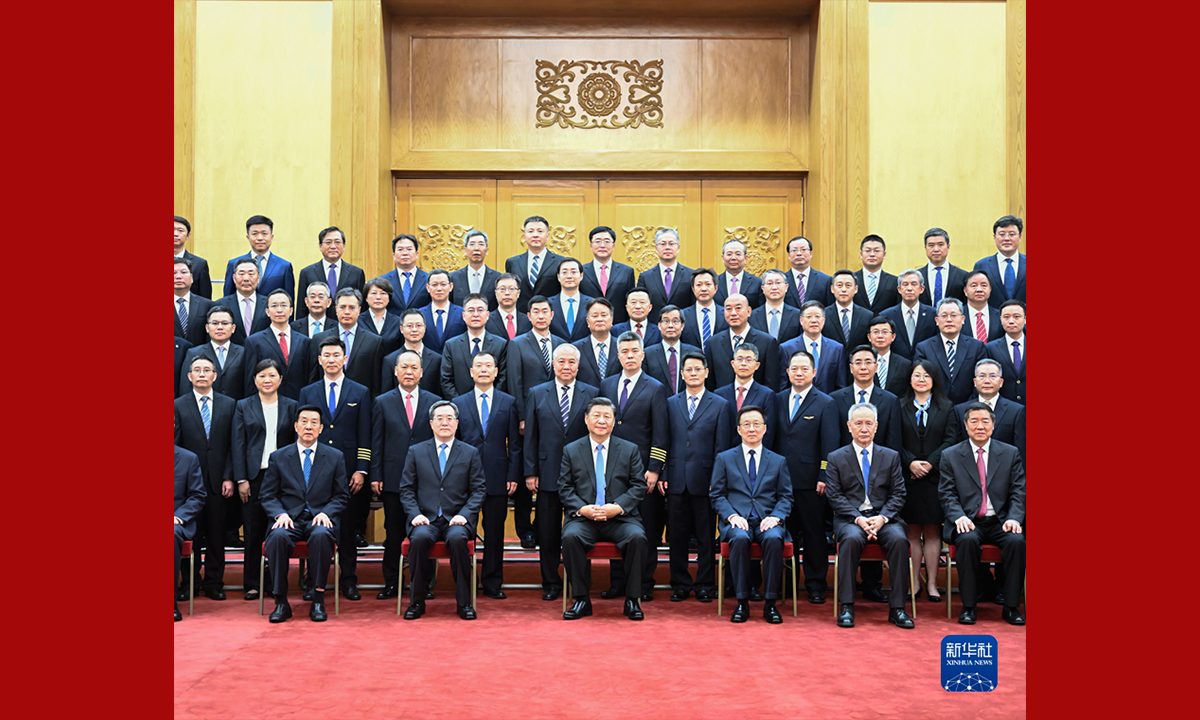
Photo:Xinhua
Significance
Gaining the TC means that the plane can be delivered to its launch customer, China Eastern Airlines, and more customers. So far, it has already received 815 orders from 28 customers worldwide, including Air China, China Southern Airlines, Hainan Airlines and GECAS.
The C919 is fitted with 158-168 seats and has a range of 4,075-5,555 kilometers, the same level as the most welcomed Airbus A320 and Boeing 737 in the international aviation market.
The plane conducted a successful maiden flight in May 2017. The Commercial Aircraft Corporation of China (COMAC) said on August 1 that the C919 had completed all the test flights needed to obtain an airworthiness certificate from the Civil Aviation Administration of China (CAAC) after five years' test flights. Then the jet gained the TC from China's civil aviation regulator at the end of September.
There are three certificates required for the delivery of an aircraft in China. One is a TC, which indicates that the model design of the aircraft meets requirements. The second is a production certificate (PC), which indicates that the manufacturing of the aircraft meets national standards, and the third is an aircraft certificate (AC), which means the aircraft is safe to operate, said Lin Zhijie, an aviation industry analyst and a columnist at Carnoc, a major civil aviation website in China.
These are all given by the CAAC, and all three are needed for commercial operations. Normally, it takes more time and effort to obtain the TC and PC.
For a long time, the aircraft has been regarded as "the crown of industrial manufacturing" as it has a long industrial chain including new materials, electronic information, machinery manufacturing, automatic control and high-end equipment.
For many people involved with Chinese aviation, the C919 is a real ambition and a process of struggle full of many hardships and victories, Cheng Bushi, a member of the C919 expert team, wrote in his memoir. The project is part of the dream of "China's rise" to become a powerful country, Cheng said.
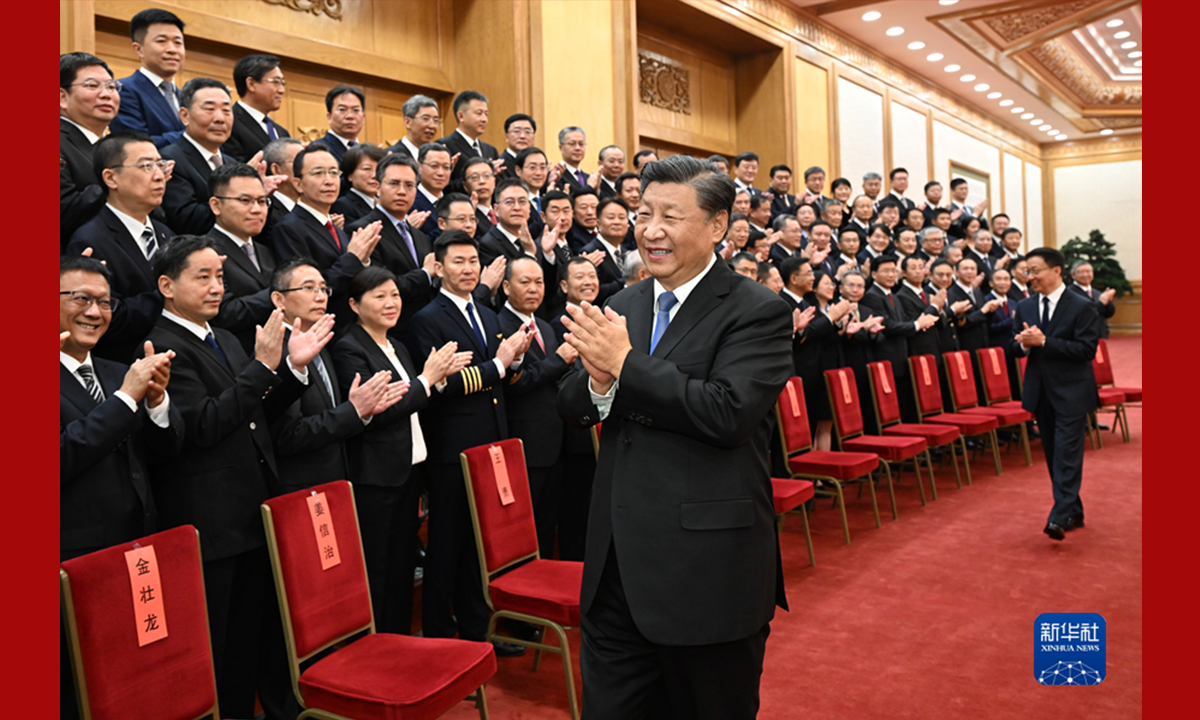
Photo:Xinhua
Localization
A report by Zhongtai Securities showed that the localization rate of the C919 is around 60 percent. In 2017, Wu Guanghui, chief designer of the C919, told Caixin that the plane has millions of interfaces, which are related to the connection between multiple systems such as hydraulics and avionics. He said the design scheme of the aircraft is the core intellectual property of COMAC.
"Although the localization rate of the aircraft is around 60 percent, it is still a good start," Qi Qi, a market watcher said, explaining that making planes involves global division of labor and no country can build an aircraft all by itself.
China should be more involved in a global industry chain instead of emphasizing the localization level, and this is a multi-win situation, he noted.
China is an integral part of the global aviation industrial ecosystem, and also an important part of the global supply chain.
There are about 200 suppliers in China supporting almost all of Airbus' commercial aircraft production and covering all the aircraft life cycles.
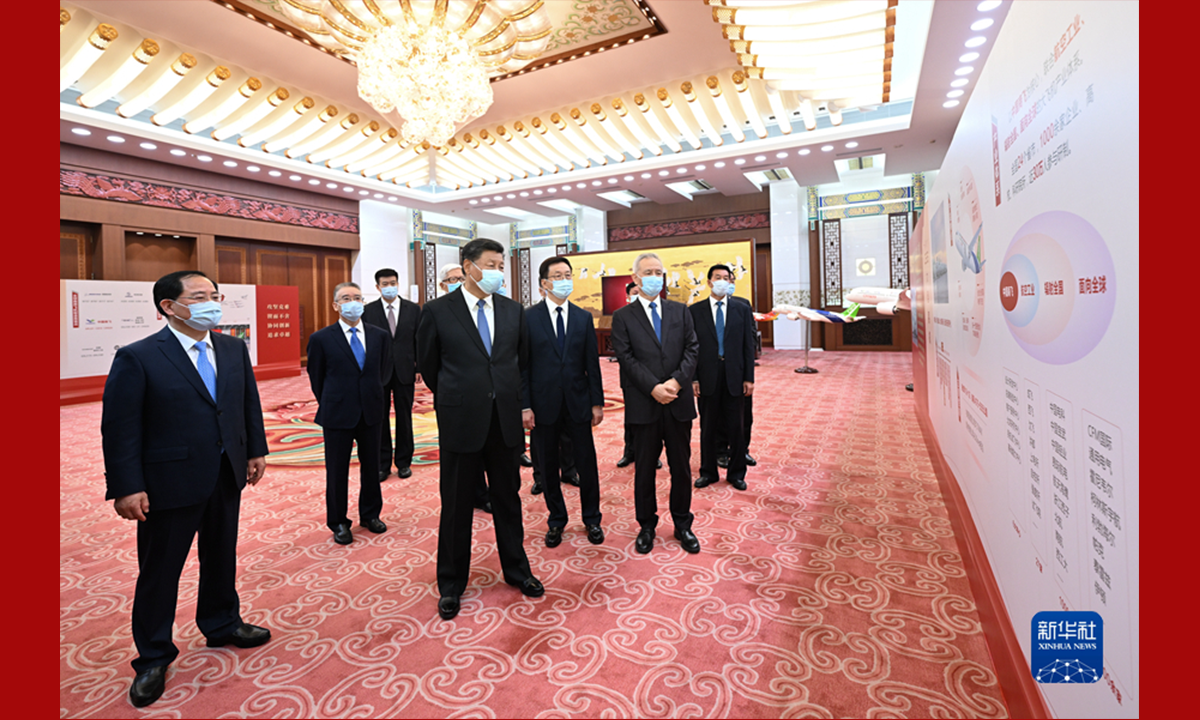
Photo:Xinhua
Delivery
In March 2021, COMAC signed a purchase contract with China Eastern Airlines for five planes. The new planes will be used on routes from Shanghai to Beijing, Guangzhou, Shenzhen and Chengdu, according to the airline.
In May 2022, the first C919 to be delivered to China Eastern Airlines with registration number B-001J completed its maiden test flight in Shanghai.
COMAC has submitted an airworthiness application to the European Aviation Safety Agency (EASA) for the C919 to prepare for potential export orders, and has been accepted by the agency, according to yicai.com.
According to industry insiders, due to the developed aviation industry in the US and Europe, the airworthiness certification systems of EASA and the Federal Aviation Administration are more complete, and many countries will refer to the standards of the two or directly require that civil aircraft entering their countries meet these standards. The airworthiness standards of the US and Europe have also become the de facto access standards for the international civil aviation industry.
Yang Zhenmei, director of the Aircraft Airworthiness Certification Department of the CAAC, said at the end of last year that China has signed comprehensive bilateral agreements with the US and the European Union to accept each other's qualified aviation products, creating a favorable bilateral policy environment for the export of domestic civil aircraft to the international market.
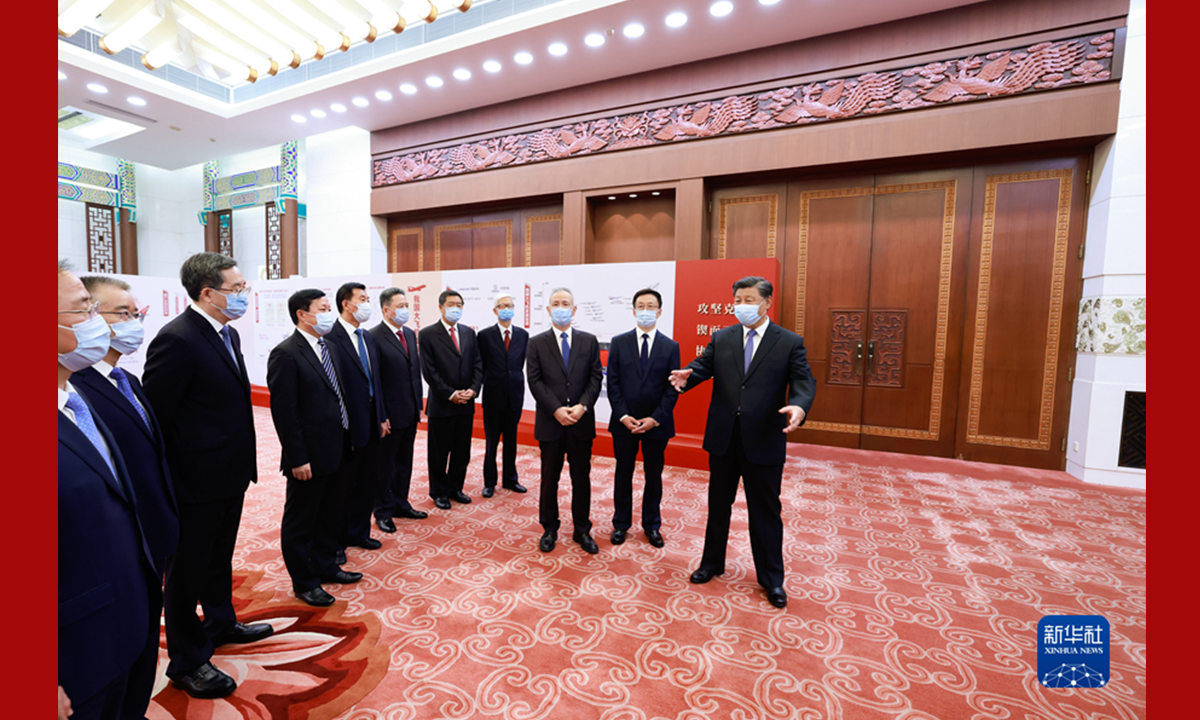
Photo:Xinhua
Breaking monopoly
After decades of mergers and acquisitions, the commercial airliner market has long been monopolized by Boeing of the US and Airbus of Europe.
To break the monopoly, the Chinese government set up COMAC, which developed the ARJ21, C919 and CR929 wide-body aircraft. The C919 targets the Boeing B737 and Airbus A320, the most popular models in the aviation market.
Data from COMAC showed that more than 200 enterprises and 36 universities in China participated in the development of the aircraft.
Regarding the advantages of the C919, Yang Zhigang, the pre-research chief engineer of COMAC, said that most of the performance indicators of the C919 are the same as the current Airbus A320 and Boeing 737, and even better than the Airbus A320 and Boeing 737 in terms of aerodynamic layout.
According to a research report previously released by Galaxy Securities, the catalog unit price of C919 is $99 million, which is more competitive than imported aircraft of the same level as Airbus A320 series and Boeing 737 series.
Lin told the Global Times that C919 has its own unique advantages. First of all, C919 is cheap, and there is no need to introduce import tariffs. Second, C919 will have better after-sales service, because the entire manufacturing and service teams are in China, which can have a timely respond and support according to customer needs.
The C919 will hopefully compete with Boeing and Airbus soon, but it will take time, as it needs to prove its reliability and safety, Qi said.
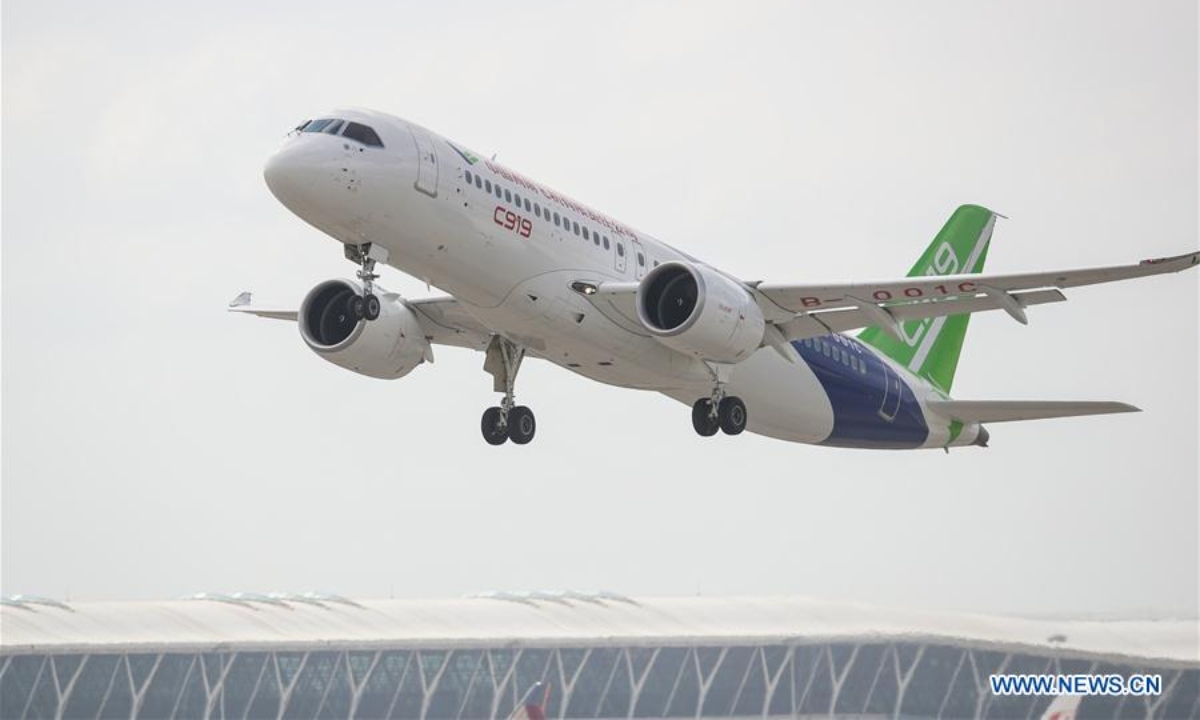
The No.102 C919 plane takes off at Pudong Airport in Shanghai, east China, July 12, 2018. Photo:Xinhua
Boeing and China have an enduring partnership of more than 45 years. More than 50 percent of all commercial jets operating in China are Boeing aircraft, and more than 10,000 Boeing aircraft currently fly around the world using Chinese-made components and assemblies, according to the official website of Boeing.
Airbus told the Global Times previously that China is the largest single-country market for Airbus commercial aircraft. Deliveries to the Chinese market last year represented over 20 percent of Airbus' total deliveries worldwide.
From now until the mid-2030s, the competitive landscape of the global civil aircraft industry will largely continue the duopoly of Boeing and Airbus, Zhang Yugui, dean of the school of economics and finance at Shanghai International Studies University, told the Global Times.
With the continuous commercialization of Chinese civil aircraft represented by the C919, COMAC is expected to become the third largest force in the global aircraft industry through continuous R&D and improving manufacturing capabilities, he added.


